WHY CAT GRASS
For indoor cats, an important ingredient for health is access to green, growing/living plants, grasses in particular. Contrary to popular belief, cats do not just eat grass when they are sick (though it does appear to help them to chew it if they feel a little off). Most of them simply enjoy the taste and perhaps their instincts tell them that the grass supplies some nutrition as well. A little grass adds fiber to the cat’s diet, which can aid in digestion, reduce hairballs and help to expel intestinal parasites. The chlorophyll content can also improve your cat’s breath. ~~~~~~~~~~~~~~~~~~~~~~~~~~~~~~~~~~~~~~~~~~~~~~~~~~~~~~~~~~~~~~~~
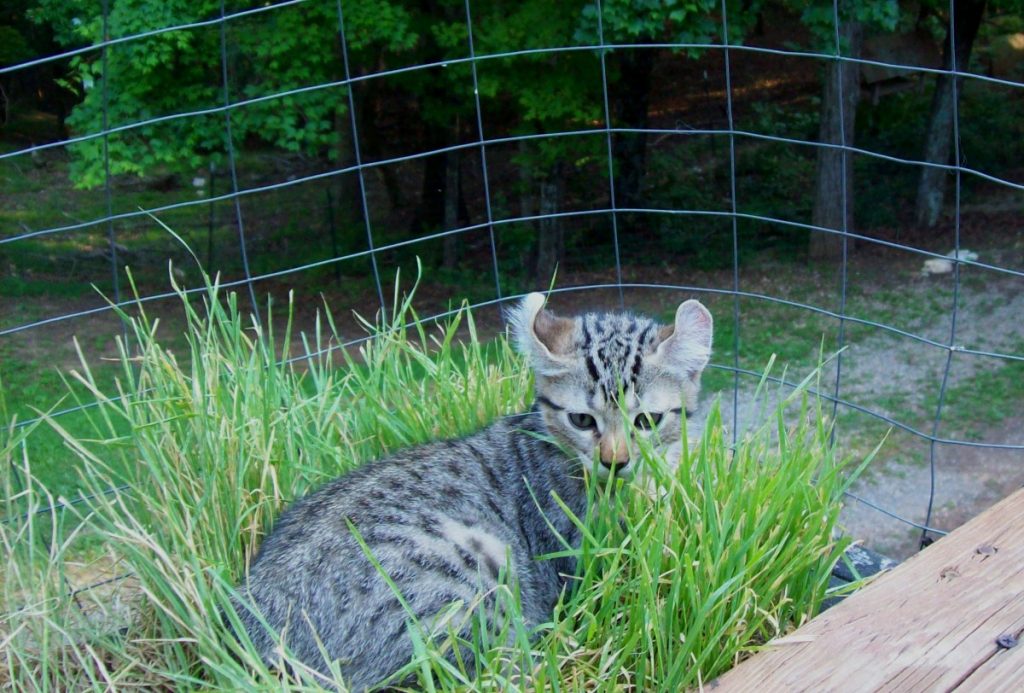
Aslan 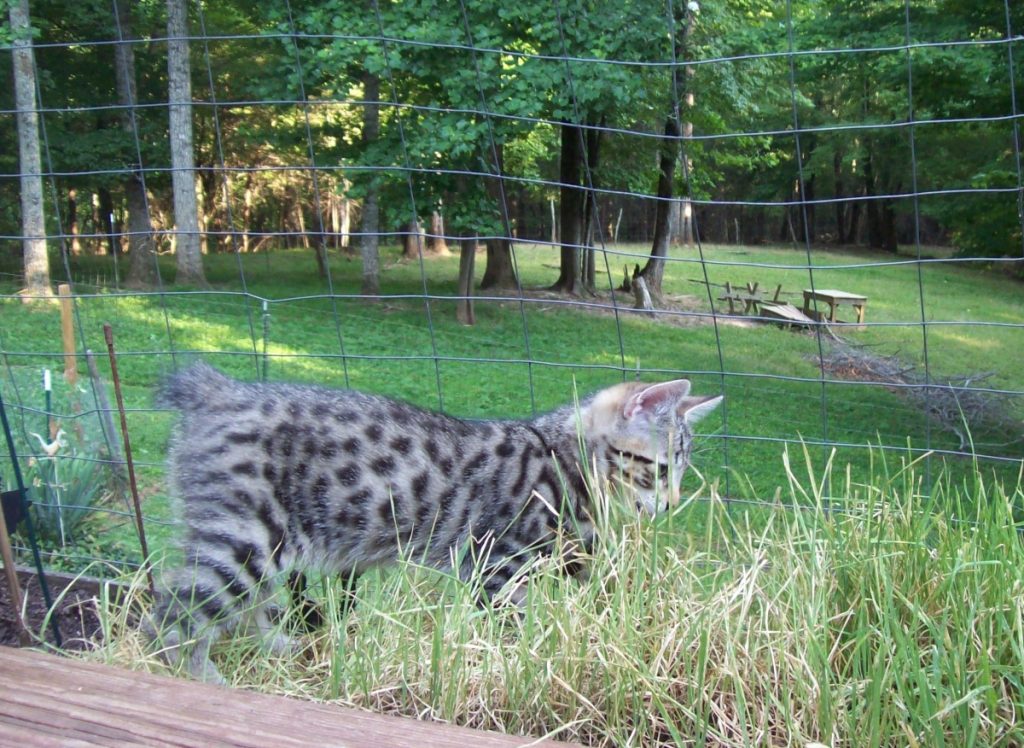
Courage
Some interesting research has been done on cats and their grass eating habits. In 2008 Benjamin L. Hart, DVM, and a team of researchers from UC Davis Veterinary School surveyed over 2,000 pet parents. Dr. Hart and his team found that most cats do not appear ill before they eat grass and that they do not regularly vomit afterward. Dr. Hart concluded that eating grass is not a sign of illness in cats, but is instead a normal trait inherited from their wild ancestors.
You can find 100% organic, non-GMO grass in pet stores, online and at health food stores. Cat grass can be grown easily from seed in your home. Plant it indoors or on decks and patios, in pans, pots, window boxes, etc. Cat grass can be any one of several grasses: organic wheat grass is the most popular but it can also be organic barley, oat, alfalfa or rye grass. If your cat does not like one kind you can try another. Look for organic wheat berries, etc. as those are the kind without any round-up or other pesticides on them.
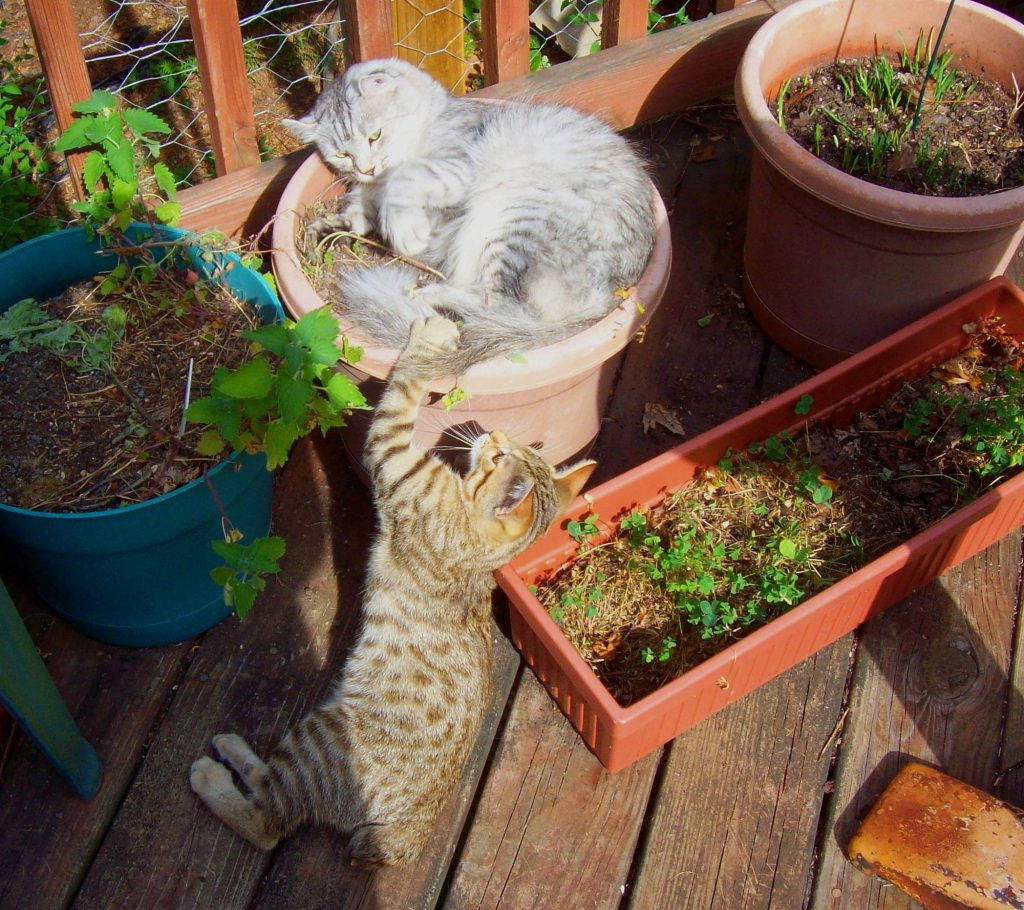
Electra and Tazia 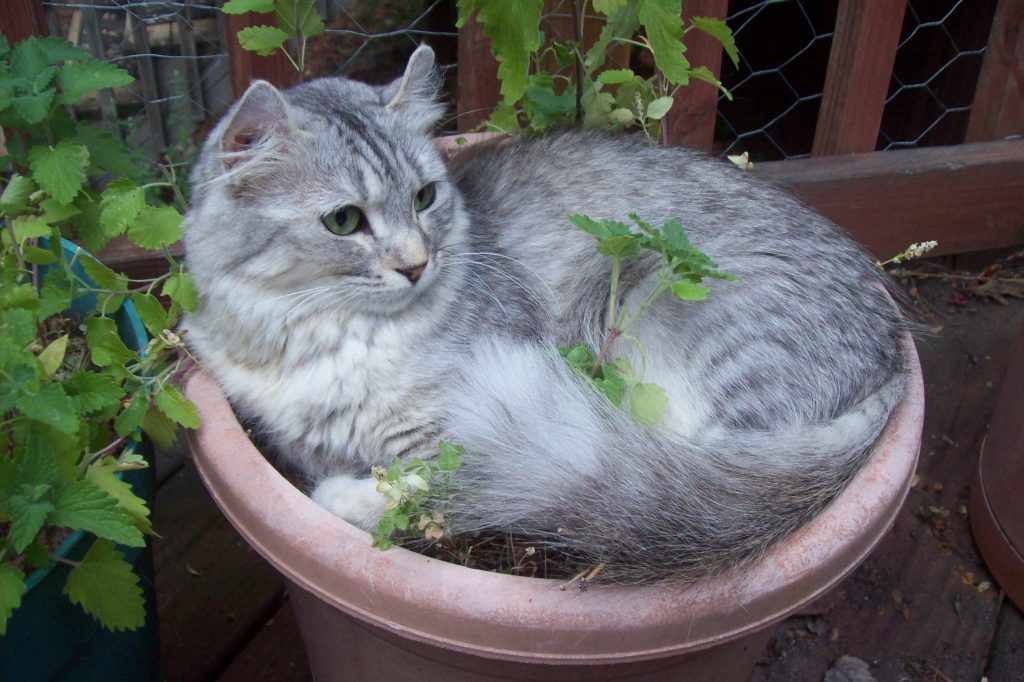
Electra
HOW TO PLANT CAT GRASS
Plant the seeds liberally in heavy or low containers of untreated potting soil. (Short or heavy containers help keep your kitty from knocking them over easily). Sprinkle a light but complete cover of plain potting soil over the seeds, water them and watch your cats enjoy it as it grows. You can trim it back with scissors if it grows too tall. Some cats like to get into the grass containers to dig or to sleep, so you might want to cover the container with some chicken wire until the grass gets big enough for them to eat.
IMPORTANT NOTE: This type of grass is not the same as lawn grass, which can contain harmful pesticides. ALSO be sure that any plants in your home or screened in porch are safe and nonpoisonous. There are several online guides to toxic and non-toxic plants for cats. Here is one you can consult: https://petcentral.chewy.com/which-plants-are-poisonous-to-cats-a-complete-guide/.
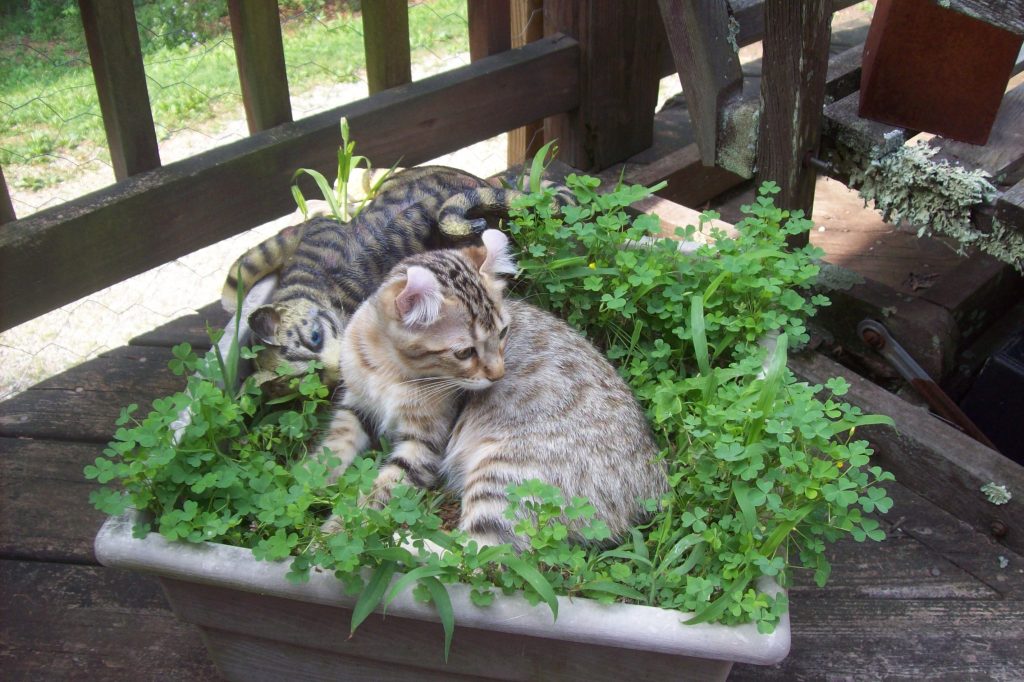
Kisha 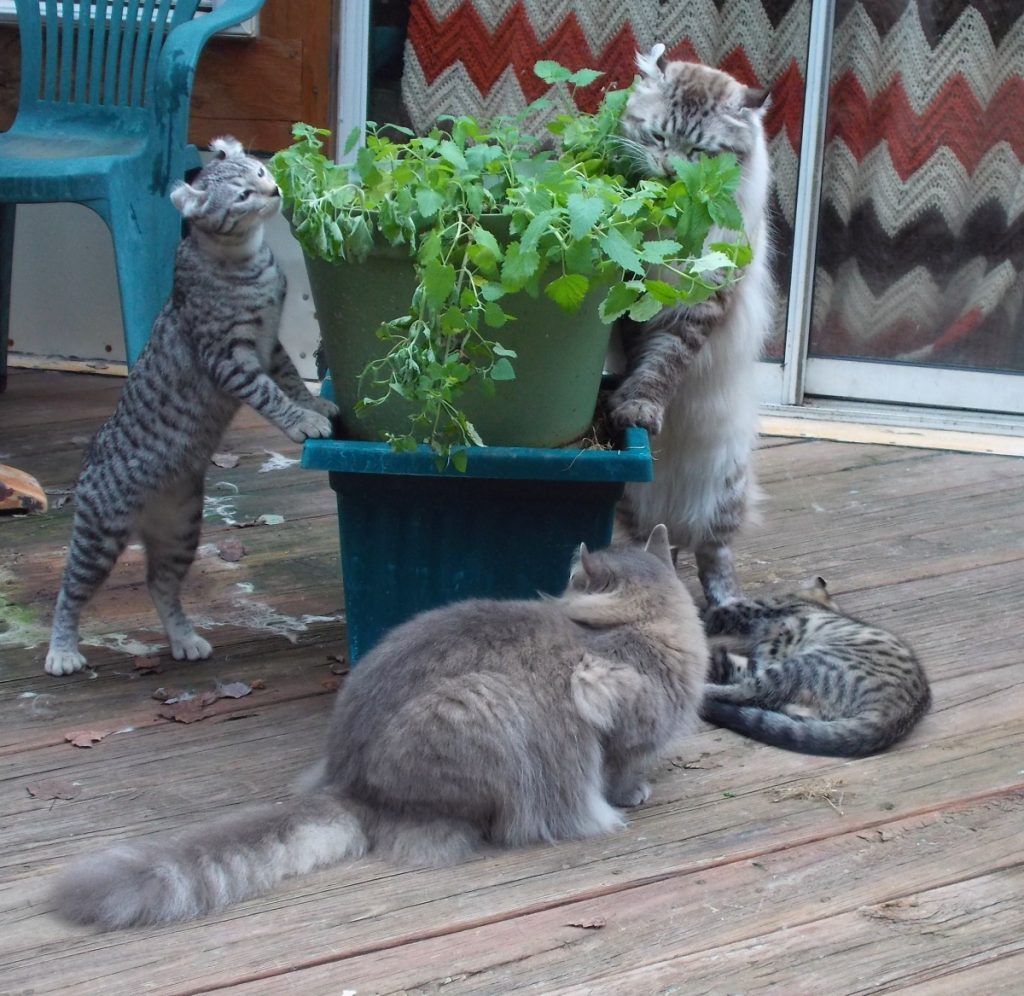
Catnip Break
WHY GRASS MAKES THEM VOMIT
Cats lack the enzymes necessary to digest “large” quantities of grass, and so when they eat too much it may lead to mild vomiting.
Note on Catnip: Our Highland Lynx cats enjoy their cat grass as well as fresh catnip which can also be grown from seed in pots indoors. Different cats respond differently to catnip, but we find it makes the majority of them get very relaxed. A couple of them will zip around playfully for a bit after chewing the plant.
